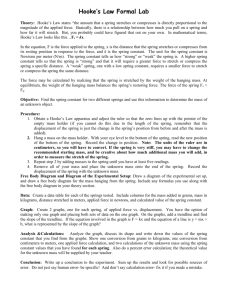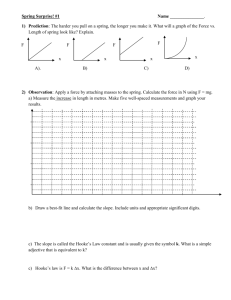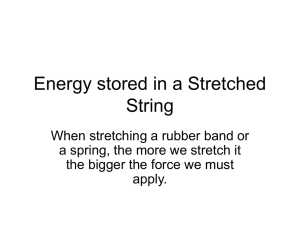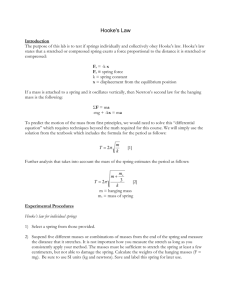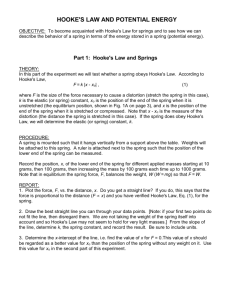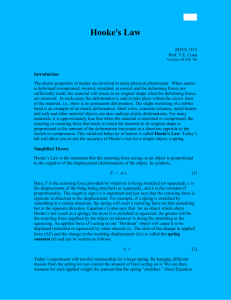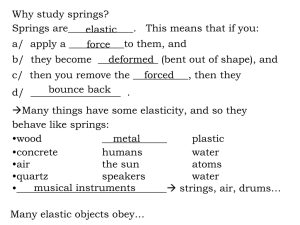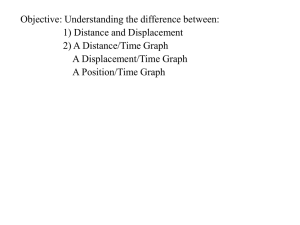L17_hooke - barransclass
advertisement
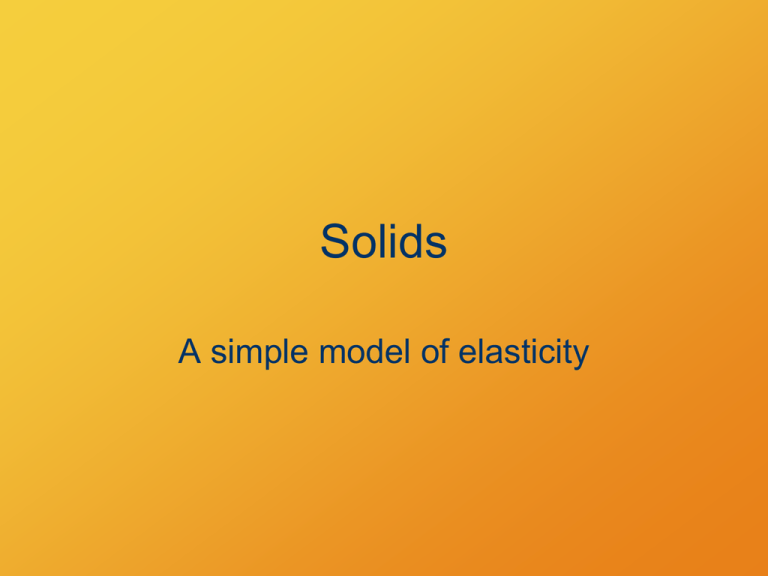
Solids A simple model of elasticity Objectives • Describe the deformation of a solid in response to a tension or compression. What’s the point? • How do solids react when deformed? Structure of Solids • Atoms and molecules connected by chemical bonds • Considerable force needed to deform compression tension Structure of Solids Atoms are always “attracting each other when they are a little distance apart, but repelling upon being squeezed into one another” apart force 0 toward equil equil apart distance Structure of Solids Atoms are always “attracting each other when they are a little distance apart, but repelling upon being squeezed into one another” apart force 0 toward equil distance Force and Distance apart force 0 toward equil distance Elasticity of Solids Small deformations are proportional to force small stretch larger stretch Hooke’s Law: ut tensio, sic vis (as the pull, so the stretch) Robert Hooke, 1635–1703 forward slope < 0 0 backward Force exerted by the spring Hooke’s Law Graph backward 0 forward Displacement from equilibrium position Hooke’s Law Formula F = –kx F = force exerted by the spring k = spring constant; units: N/m; k > 0 x = displacement from equilibrium position negative sign: force opposes distortion Poll Question backward forward What direction of forward force is needed to Spring’s hold the object Force backward (against the spring) at its Displacement plotted displacement? A. Forward (right). C. No force (zero). B. Backward (left). D. Can’t tell. Group Work A spring stretches 4 cm when a load of 10 N is suspended from it. How much will the combined springs stretch if another identical spring also supports the load as in a and b? Hint: what is the load on each spring? Another hint: draw force diagrams for each load. 0N 10 N 0N 10 N Work to Deform a Spring • To pull a distance x from equilibrium slope = k kx area = W force displacement • Work = 1 2 • Work = 1 2 kx·x F·x ; F = kx 1 = 2 kx2 x Potential Energy of a Spring The potential energy of a stretched or compressed spring is equal to the work needed to stretch or compress it from its rest length. PE = 1/2 kx2 The PE is positive for both positive and negative x. Group Poll Question Two springs are gradually stretched to the same final tension. One spring is twice as stiff as the other: k2 = 2k1. Which spring has the most work done on it? A. The stiffer spring (k = 2k1). B. The softer spring (k = k1). C. Equal for both. Reading for Next Time • Vibrations • Big ideas: – Interplay between Hooke’s force law and Newton’s laws of motion – New vocabulary that will also apply to waves A Word
